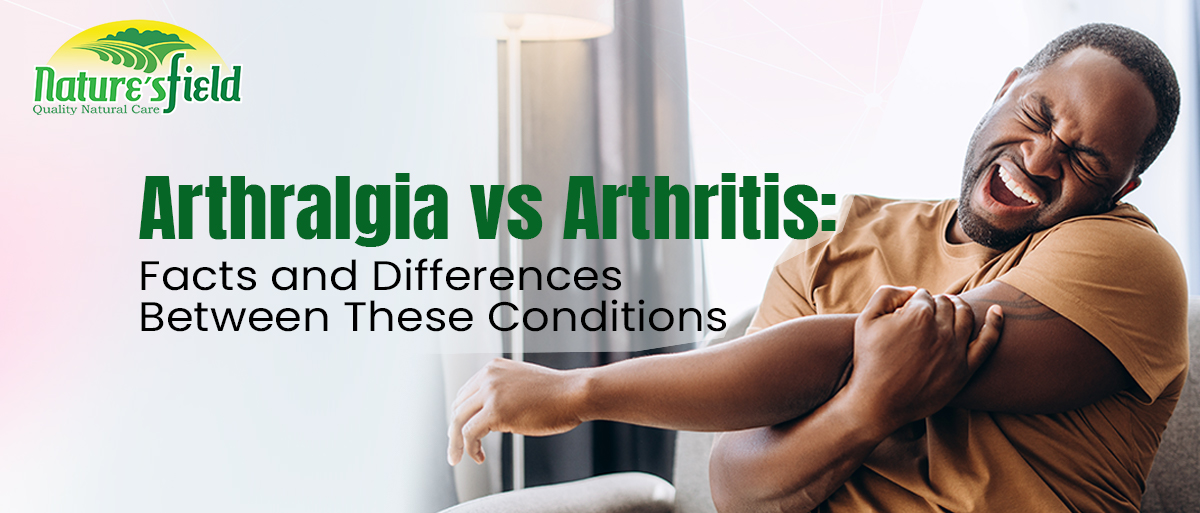
Arthralgia vs Arthritis: Facts and Differences Between These Conditions
Chances are, you or someone you know might have experienced joint pain. Arthritis can occur in one or multiple joints and can restrict movement and trigger inflammation. However, having joint pains doesn’t automatically mean you have arthritis because there are other factors to consider before the diagnosis of arthritis.
Arthritis and arthralgia are two terms used to describe chronic pain in the joints although the former is more common than the latter. However, are you aware that there is a difference between them? Can both conditions cause similar complications in your body? This article answers these questions and unravels the facts and differences between arthralgia and arthritis.
What Type of Joint Pain Is Arthralgia?
This is joint pain that occurs without inflammation, and if the pain affects several joints, it is called polyarthralgia. Injury, underlying medical conditions, and other factors can cause it; unlike arthritis, you do not see redness in the affected joints.
Key Facts About Arthralgia
Here are some vital facts about arthralgia you ought to know:
· It can affect any of the joints in your body.
· The pain associated with arthralgia can range from mild to severe to extreme.
· Arthralgia is considered to be a sign of an underlying medical condition like cartilage loss, bursitis, etc.
· This condition can affect any individual irrespective of age.
What Type of Joint Pain Is Arthritis?
Arthritis involves inflammation of one or more joints. It causes pain, swelling, and stiffness and reduces mobility. Different types of arthritis not only affect your joints but can also impact the cartilage, surrounding tissues, bones, etc.
Key Facts About Arthritis
Some essential facts about arthritis include:
· People with poor lifestyle factors such as obesity and high cholesterol commonly experience this.
· Arthritis symptoms vary, but people commonly experience joint pain and stiffness.
· Osteoarthritis, the most prevalent type of arthritis, affects the hips, legs, and hands.
· You can manage arthritis well through lifestyle changes and joint-support supplements, although it does not have a cure.
Arthralgia Vs Arthritis
Arthralgia can sometimes occur before arthritis, making it difficult to distinguish between the two. Nevertheless, the following are some differences:
· Symptoms: The symptoms of arthritis include joint pain, redness, swelling, reduced mobility, etc. Arthralgia comes with joint pain without swelling or redness in your joints.
· Causes: Injury, autoimmune conditions, infections, and cartilage deterioration can cause arthritis. Arthralgia can occur if you misuse your joints or have an underlying condition like lupus. It can occur as a side effect of chemotherapy.
· Risk factors: Obesity, a sedentary lifestyle, age, and previous joint injuries contribute to the risk of arthritis. The increased risk of developing arthralgia is joint overuse and underlying medical conditions.
· Complications: Arthritis can lead to joint damage, deformity, carpal tunnel syndrome, heart and lung complications, etc. Complications of arthralgia include chronic joint pain, poor movement, and the onset of severe arthritis.
How to Reduce the Onset of Arthritis and Arthralgia
Although arthralgia and arthritis are interconnected, they represent different aspects of joint health. It is crucial to consult your healthcare professional for an accurate diagnosis and to recognize the differential symptoms. Additionally, start using NATURE’SFIELD JOINT RENEW CAPLET to fortify and support your joints and improve your quality of life.
You don’t have to endure joint pain and wait for it to “pass”. This is because it could progress into a severe condition which can be challenging to manage. Also, you should also consider adopting lifestyle changes such as cessation of smoking and alcohol intake, eating healthily, and exercising regularly; these can help your joints as well. Incorporate a joint-support supplement such as NATURE’SFIELD JOINT RENEW CAPLET to get permanent relief from arthritis pain.



